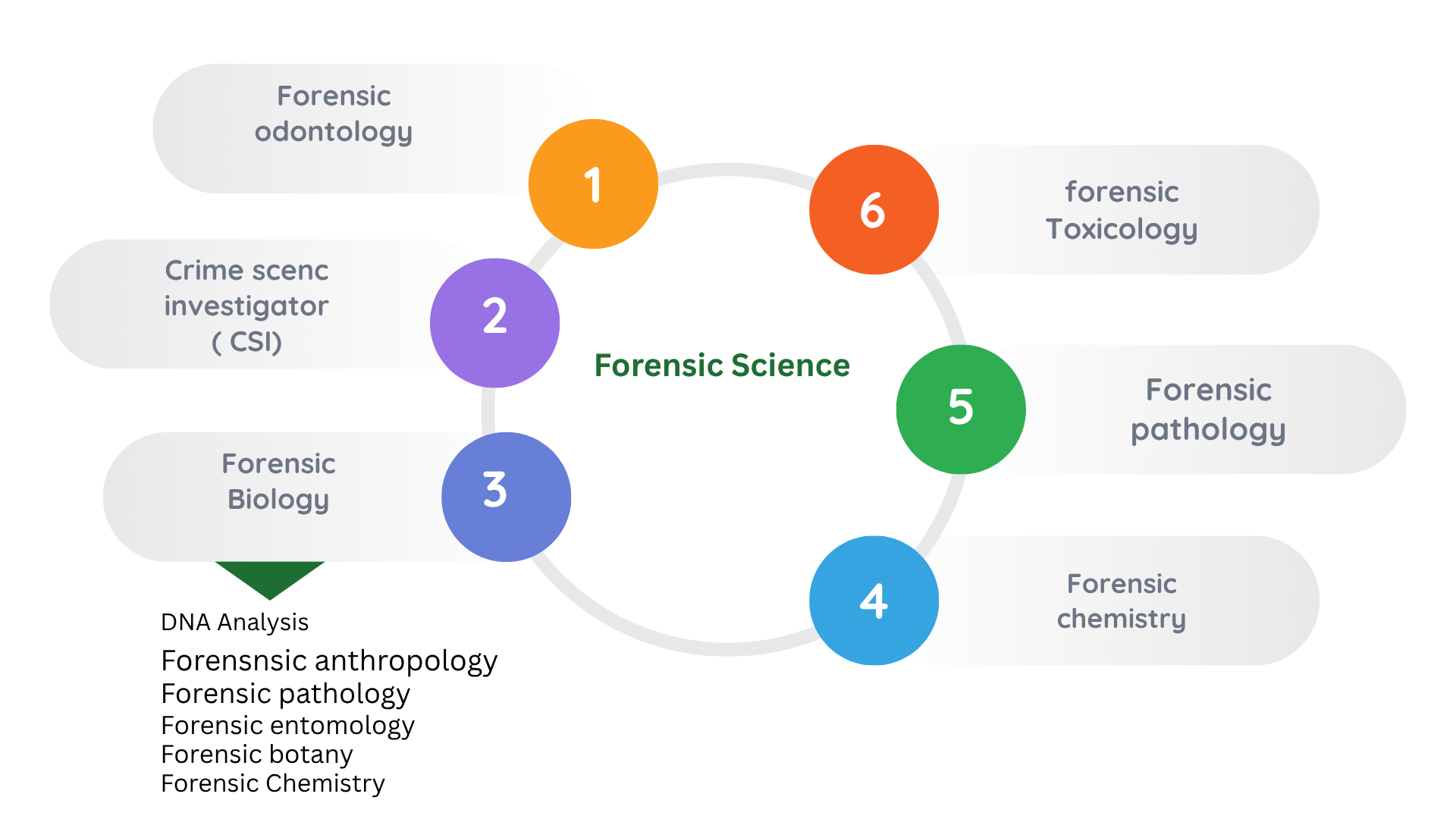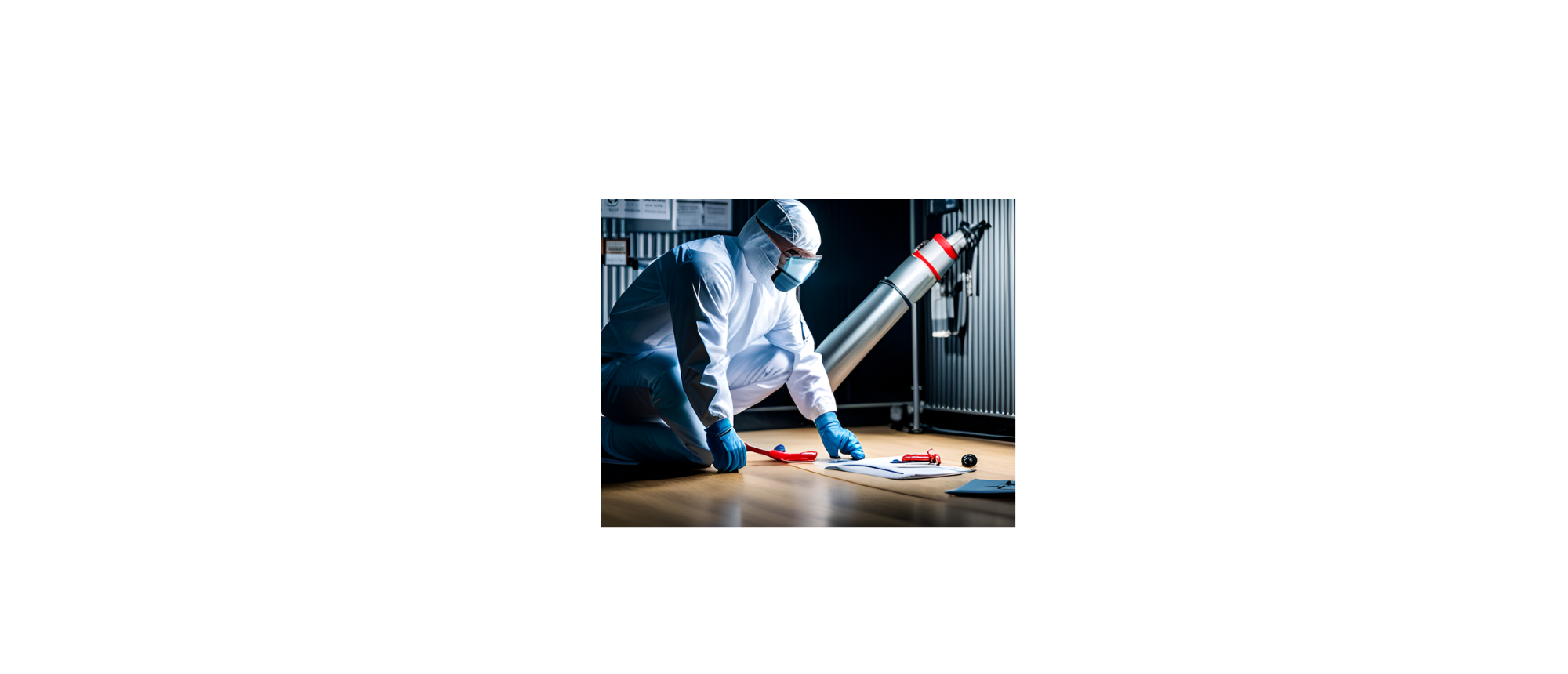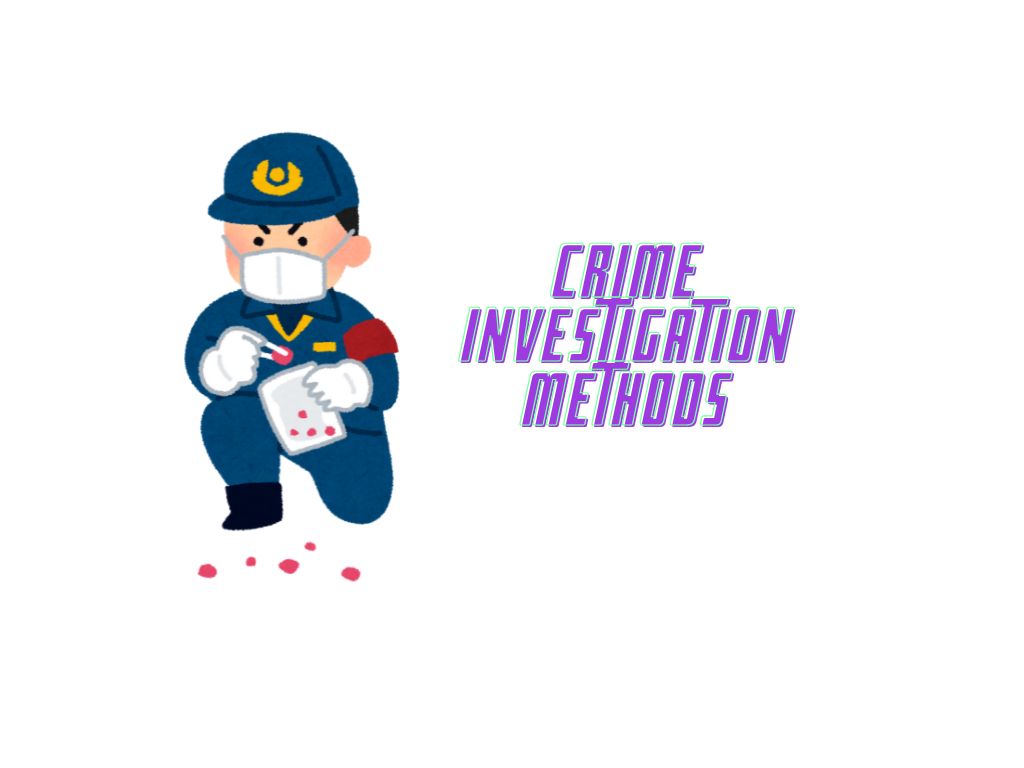Definition
Forensic science is a branch of science in which principles and techniques are applied to investigate crimes and support the court of law.
Meaning of forensic
Rome: Forum – meaning “public place where legal matters were discussed
Latin: Forensis – meaning “of or before the forum”
Function of forensic science
1.crime scene investigation
-secure the crime scene -survey the crime scene
-documentation
-collection of evidence
-preserving evidence
-examination
-chain of custody
2.Crime scene reconstruction
- Expert Testimony
- Further Investigation
Services of crime laboratory
Units offered are:
1.Biological Unit
Examination of biological evidence
-blood, hair, skin, saliva, etc
2.Chemistry
Examination of chemical evidences
-drugs, poisons, alcohols, narcotics, arson, etc
3.Ballistics Unit
Examination of
-firearms, bullets, cartridge, gunshot, tool marks
4.Fingerprint Unit
Examination of
-fingerprint, footprint, palm, etc
5.Digital Forensic Unit
Recovery of data from phone, storage devices, etc.
6.Questioned Document
Analysis of handwriting, signatures, printing, etc.
detection of forgeries alteration, counterfeit documents.
- Arson Unit
Examination of fire debris
Examination of accelerants
Analysis of explosive materials - Forensic Pathology & Medical Examiner Services
Autopsies
Determining cause and manner of death

Basic principles of forensic science
Principle of exchange or locard’s Exchange Principle
Principle of Individuality
Principle of Comparison
Principle of Reliability
Principle of Probability
Principle of Progressive Change
Principle of Analysis

Branches in forensic science
Forensic Toxicology
Forensic Biology
Forensic Pathology
Forensic Question Documents
Forensic Chemistry
Forensic Anthropology
Forensic Psychiatry
Digital Forensic
Forensic Ballistics
Forensic Psychology
Forensic Odontology
Forensic Engineering
Forensic Archaeology
Forensic Serology

Duties of Forensic Scientist
1.Conducting a Scene Visit
•The forensic investigator attends the crime scene and conducts an investigation using scientific methods to identify, document, and collect evidence.
2.Photography in Crime
•Wide-Angle: Used to capture the entire crime scene, including layout, surroundings, and entry/exit points.
•Mid-Range: Used to show evidence in relation to other objects or fixed reference points in the scene.
•Close-Up: Used to capture detailed images of specific evidence like bloodstains, weapons, or wounds (with and without scale).
•Macro: Used for extreme close-ups of small or fine evidence such as fingerprints, fibers, or tool marks.
3.Collecting and Preserving Evidence
•Collection of evidence based on its nature (physical, biological, chemical, or digital).
•Ensuring proper packaging, labelling, preservation, and maintaining the chain of custody.
4.Examination of Evidence
Scientific analyses of various types of evidence are performed in the laboratory.
•Physical Evidence
Glass
Fibers
Paint
Tools
Weapons
•Chemical Substances
Drug
Poisons
Explosives
Alcohol
•Biological Evidence
DNA from blood, hair, or skin
•Ballistics
Bullets matched to firearms
•Digital Evidence
Computers
Mobile phones
Hard disks
Pen drives
SD cards
5.Crime Scene Sketch
•Rough Sketch: A quick drawing made at the crime scene to show the location of evidence and objects.
Finished Sketch: A clean and accurate version of the rough sketch, created neatly at a later time.
•3D Sketch: A three-dimensional drawing that helps visualize the spatial arrangement of the scene.
•Elevation Sketch: A drawing that shows evidence located on vertical surfaces or at different heights.
6.Documentation and Reporting
•All tests and procedures performed are accurately recorded and documented.
Test results are analyzed and compared to known samples.
Proper documentation is essential for legal and scientific integrity.
7.Courtroom Testimony
•Forensic experts present their test results as evidence in court.
•Provide expert scientific advice to support legal arguments.
•Offer unbiased, fact-based findings to assist either side (victim or accused).
•Explain scientific processes and evidence clearly to judges, juries, and lawyers.
•Contribute to solving the case by interpreting and explaining the evidence.



